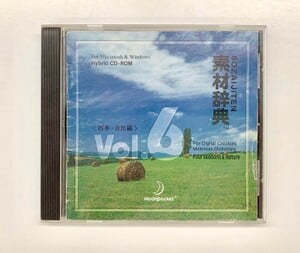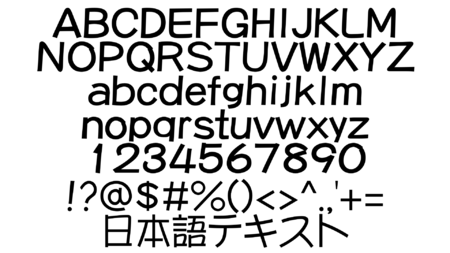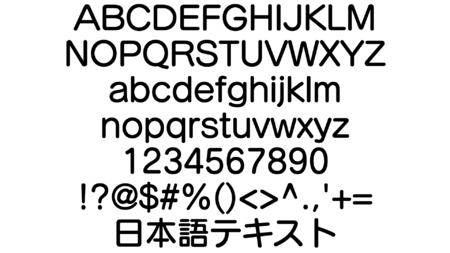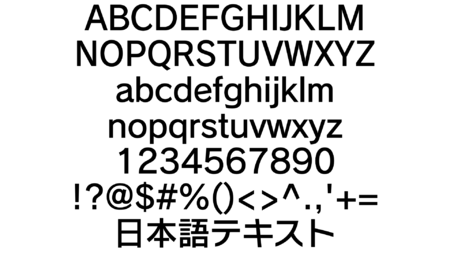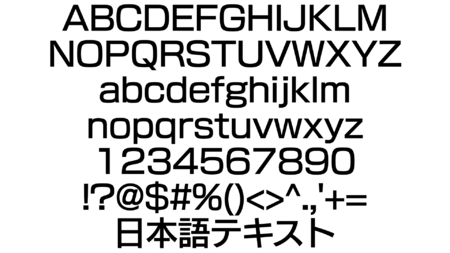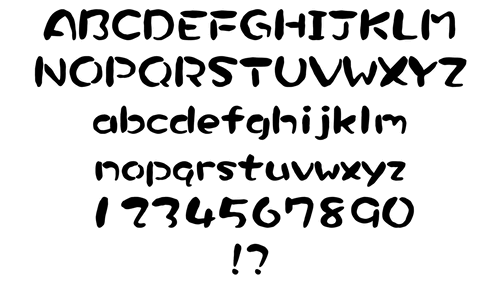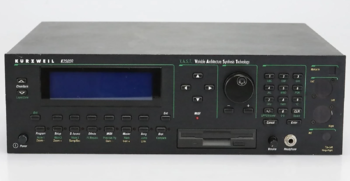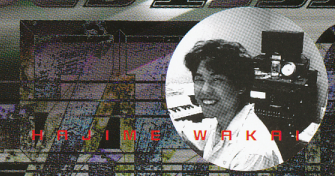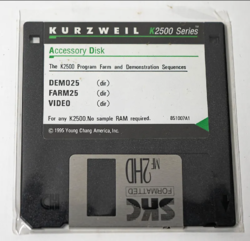Assets used in the Pikmin series: Difference between revisions
(restructuring audio section) |
|||
| Line 359: | Line 359: | ||
In {{P3}} and {{P4}}, an in-universe written language appears very frequently on technology and as a background element throughout various in-game menus. The text appears as an assortment of illegible alien symbols, but these characters are actually translatable into the 26 letters in the English alphabet, which reveal some small secrets when various instances of the text are deciphered. | In {{P3}} and {{P4}}, an in-universe written language appears very frequently on technology and as a background element throughout various in-game menus. The text appears as an assortment of illegible alien symbols, but these characters are actually translatable into the 26 letters in the English alphabet, which reveal some small secrets when various instances of the text are deciphered. | ||
==Audio | ==Audio== | ||
Similar to graphics, creating game audio often involves the sampling of various sound libraries. The games within the ''Pikmin'' series are a good example, where the vast majority of sounds can be sourced back to a number of different commercially-released products. These products are used to create the individual instrument samples and sound effects in the games, as well as long pieces of streamed music. All of the music in [[Music in Pikmin|''Pikmin'']], [[Music in Pikmin 2|''Pikmin 2'']], and [[Music in Pikmin 3|''Pikmin 3'']] use audio from digital instruments and synthesizers | Similar to graphics, creating game audio often involves the sampling of various sound libraries. The games within the ''Pikmin'' series are a good example, where the vast majority of sounds can be sourced back to a number of different commercially-released products. These products are used to create the individual instrument samples and sound effects in the games, as well as long pieces of streamed music. All of the music in [[Music in Pikmin|''Pikmin'']], [[Music in Pikmin 2|''Pikmin 2'']], and [[Music in Pikmin 3|''Pikmin 3'']] use audio from digital instruments and synthesizers; instances of musicians performing live on real acoustic instruments are highly uncommon in the games. The [[Music in Pikmin 3#Side Stories|new music]] composed by Babi for {{p3d}} is one of the very few occasions where this was done.{{cite web|https://www.reddit.com/r/Pikmin/comments/15g0eac/email_i_received_from_babi_from_my_inquiry/|Babi's response to an e-mail inquiry|Reddit}} | ||
Since there is a history of many different composers and sound effect programmers contributing to the audio of these games during production, there is a large variety of synthesizers and sample libraries present | Since there is a history of many different composers and sound effect programmers contributing to the audio of these games during production, there is a large variety of synthesizers and sample libraries present within them. | ||
===Kurzweil K2500R=== | ===Kurzweil K2500R=== | ||
[[File:Kurzweil K2500R.png|thumb|350px|Image of the K2500R.]] | |||
The [https://www.vintagesynth.com/kurzweil/k2500.php Kurzweil K2500] (and in extension, the Kurzweil K2500R) is a synthesizer manufactured by Kurzweil Music Systems in 1996. A lesser-known synthesizer, it is the signature synth of [[Nintendo#Hajime Wakai|Hajime Wakai]]. The synthesizer is a staple in the audio design of the ''Pikmin'' series, being used extremely heavily for both the music and sound effects, and in all sorts of contexts. | The [https://www.vintagesynth.com/kurzweil/k2500.php Kurzweil K2500] (and in extension, the Kurzweil K2500R) is a synthesizer manufactured by Kurzweil Music Systems in 1996. A lesser-known synthesizer, it is the signature synth of [[Nintendo#Hajime Wakai|Hajime Wakai]]. The synthesizer is a staple in the audio design of the ''Pikmin'' series, being used extremely heavily for both the music and sound effects, and in all sorts of contexts. | ||
The Kurzweil K2500R is the rackmount variant of the Kurzweil K2500, and the model that was owned and used by Hajime Wakai in his work. Typically, rackmount versions of synthesizers are functionally identical, but they lack the physical keyboard. This makes them more compact and easy to cram into a studio; however, it is intended that they be connected to an external MIDI device, such as a musical keyboard, a computer, or some other MIDI-compatible instrument in order to use them. | The Kurzweil K2500R is the rackmount variant of the Kurzweil K2500, and the model that was owned and used by Hajime Wakai in his work. Typically, rackmount versions of synthesizers are functionally identical, but they lack the physical keyboard. This makes them more compact and easy to cram into a studio space; however, it is intended that they be connected to an external MIDI device, such as a musical keyboard, a computer, or some other MIDI-compatible instrument in order to use them. | ||
[[File:F-Zero X OST Booklet crop.png|thumb|335px|Hajime Wakai and his powered-on K2500R behind him, taken from the booklet for F-ZERO X's Original Soundtrack on CD.]] | |||
{{clear}} | |||
====K25 FARM==== | ====K25 FARM==== | ||
The purchase of a new K2500 also included | [[File:K2500 Accessory Disk with K25 FARM.png|thumb|250px|Image of the Accessory Disk containing the K25 FARM.]] | ||
The purchase of a new K2500 also included several floppy disks, one of which contained the "K25 Farm". On it is a collection of several hundred new and unique presets for the K2500. Users can load these presets by simply inserting the disk into the K2500's floppy drive. If the floppy disk is lost or damaged, the files can be downloaded for free from [https://kurzweil.com/k2500/#downloads Kurzweil's website]; keep in mind, these presets are not playable without their compatible synthesizer. | |||
The K25 FARM is used very often within the music and sound effects of the ''Pikmin'' games, even within {{P3}}. | |||
{{clear}} | |||
== References == | == References == | ||
Revision as of 16:33, August 3, 2023
The Pikmin series and its world is built with distinct pieces of imagery, audio, and typefaces. A large portion of the assets used in the games are made from scratch and are proprietary to Nintendo, though occasionally, some of these assets may be taken or contain elements from external sources. This can include commercially-available software libraries, or real-life objects and hardware.
Stock photography
Since the objects and environments within the Pikmin series are often based on human technology and nature in the real world, photography of real items and locations on Earth are a common resource for textures. For the first game, a large amount of these images were taken in Japan by members of the game's own staff.[1] However, it was not uncommon for some few pieces of foliage to be made using graphics from stock photography libraries. For more unnatural materials, this occurred a lot more often. During the development of Pikmin and Pikmin 2, these libraries were primarily sold and distributed on CD-ROMs.
Sozaijiten
Sozaijiten (素材辞典?, lit.: "Material Dictionary") is a series of stock image libraries by Datacraft that is advertised and sold as volumes. The content of each volume is themed (usually around a type of material, part of nature, or event), and were originally distributed on singular CD-ROMs. For Pikmin and Pikmin 2, photographs and artwork from Sozaijiten are used very often and in a myriad of ways.
On Sozaijiten's website, low-resolution previews of every image are available for browsing. The previews come with descriptions; these reveal the original shooting location of certain photos, or some miscellaneous information about the photographed material.
| List of Sozaijiten textures used in Pikmin | |||||
|---|---|---|---|---|---|
| Volume | Name | Source Image | Texture/Screenshot | Description | |
| Vol. 6 四季・自然編
(Seasons and Nature) |
SF085 | 
|

|
The background to a piece of promotional artwork for Pikmin. It is an image of some horsetails, taken in Atsuta, Hokkaido. | |
| Vol. 6 四季・自然編
(Seasons and Nature) |
SF097 | 
|
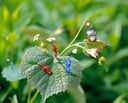
|
The background to a piece of promotional artwork for Pikmin. | |
| Vol. 6 四季・自然編
(Seasons and Nature) |
SF122 | File:Pikmin The Final Trial Island Base.png | 
|
The mountains in the area selection menu. It is a photograph of Mount Kamui and Lake Mashū. | |
| Vol. 6 四季・自然編
(Seasons and Nature) |
SF164 | File:Pikmin World Map Base.png | 
|
The main landmass in the area selection menu. It was taken in Shakotan, Hokkaido. | |
| Vol. 13 葉・葉脈編
(Leaves and Leaf Veins) |
SM054 | 
|
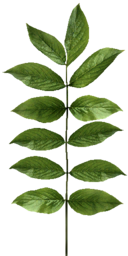
|
Several plants found in the The Impact Site. It is a photograph of an elderberry's leaves. | |
| Vol. 16 皮・年輪編
(Wood Textures) |
SQ166 | 
|
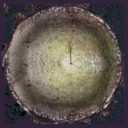
|
The base of several wooden stumps in The Distant Spring. | |
| Vol. 21 宇宙・惑星編
(Space and Planets) |
SV001 | 
|
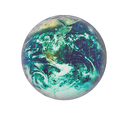
|
PNF-404, in the Nintendo Player's Guide of Pikmin. It is a photograph of Earth. It is also used for Koppai in the opening of Pikmin 3. | |
| Vol. 21 宇宙・惑星編
(Space and Planets) |
SV002 | 
|
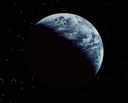
|
PNF-404, during the credits of Pikmin. It is a photograph of Earth. | |
| Vol. 21 宇宙・惑星編
(Space and Planets) |
SV007 | 
|

|
PNF-404, during the good ending cutscene of Pikmin. It is a photograph of Earth. | |
| List of Sozaijiten textures used in Pikmin 2 | |||||
|---|---|---|---|---|---|
| Volume | Name | Source Image | Texture/Screenshot | Description | |
| Vol. 1 テクスチャー・石編
(Stone Textures) |
SA068 | 
|
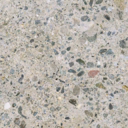
|
Stone used around the geyser in the 2nd sublevel of the Emergence Cave. | |
| Vol. 2 紙・布・木編
(Paper, Cloth, and Wood Textures) |
SB108 | 
|

|
The fabric for the Five-man Napsack. | |
| Vol. 5 空・雲編
(Sky and Clouds) |
SE074 | 
|
The fog in the area selection menu of Pikmin 2. | ||
| Vol. 6 四季・自然編
(Seasons and Nature) |
SF122 | File:Pikmin The Final Trial Island Base.png | 
|
The mountains in the area selection menu. It is a photograph of Mount Kamui and Lake Mashū. | |
| Vol. 6 四季・自然編
(Seasons and Nature) |
SF164 | File:Pikmin World Map Base.png | 
|
The main landmass in the area selection menu. It was taken in Shakotan, Hokkaido. | |
| Vol. 6 四季・自然編
(Seasons and Nature) |
SF190 | 
|

|
Snow used for the Valley of Repose's background image. The image was taken on a beach in Otaru. | |
| Vol. 6 四季・自然編
(Seasons and Nature) |
SF191 | 
|

|
Trees used for the Valley of Repose's background image. The image was taken in Shikaoi, Hokkaido. | |
| Vol. 8 壁・土編
(Walls and Soils) |
SH071 | 
|

|
The walls of a cave background in Pikmin 2 , build. It has been flipped horizontally.
| |
| Vol. 8 壁・土編
(Walls and Soils) |
SH096 | 
|
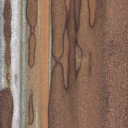
|
Several metallic sheets buried in the ground that appear in the Perplexing Pool. | |
| Vol. 13 葉・葉脈編
(Leaves and Leaf Veins) |
SM074 | 
|

|
Large leaves in the Perplexing Pool. It is a photograph of Galax. | |
| Vol. 16 皮・年輪編
(Wood Textures) |
SQ166 | 
|

|
The base of several wooden stumps in the Perplexing Pool and a unique cave unit seen in the Hole of Heroes. | |
| Vol. 21 宇宙・惑星編
(Space and Planets) |
SV161 | 
|

|
A galaxy that can be seen in the Debt Repayment Cinema in Pikmin 2. It is a photograph of a spiral galaxy in the Pegasus constellation. | |
| Vol. 21 宇宙・惑星編
(Space and Planets) |
SV186 | 
|

|
Nebulae that can be seen in the Opening and Debt Repayment Cinemas in Pikmin 2. It is a photograph of the Orion Nebula. | |
| Vol. 21 宇宙・惑星編
(Space and Planets) |
SV187 | 
|

|
Nebulae that can be seen in the Opening and Debt Repayment Cinemas in Pikmin 2. It is a photograph of the Orion Nebula. | |
| Vol. 24 大理石編
(Marbles) |
SY089 | 
|

|
The texture for the Priceless Statue and Worthless Statue. It is an image of Grigio Carnico marble. For the latter treasure, the colors have been inverted. | |
| Vol. 53 木目・組木・あじろ編
(Grain, Interlocked and Braided Wood) |
CD123 | 
|

|
The texture used for the Shock Therapist's wooden base. It is an image of rosewood. | |
| Vol. 53 木目・組木・あじろ編
(Grain, Interlocked and Braided Wood) |
CD138 | 
|

|
A cave background in Pikmin 2 , flooring. It is an image of 5-inch white oak flooring. Several planks of wood were stretched.
| |
Bakku no Oni
Bakku no Oni (バックの鬼?, lit.: "Background Demon") is a series of stock image libraries that was distributed by A&P CO-ORDINATOR JAPAN. Its volumes were themed after colors or emotions. Images from "Bakku no Oni SABI 2" were often used as textures for the caves in Pikmin 2.
| List of Bakku no Oni textures used in Pikmin 2 | |||||
|---|---|---|---|---|---|
| Volume | Name | Source Image | Texture/Screenshot | Description | |
| 寂2
(SABI 2) |
RUST-08 | 
|

|
Used for a small metal plate in the center of the room_hitode3x3_5_metal cave unit.
| |
| 寂2
(SABI 2) |
RUST-27 | 
|
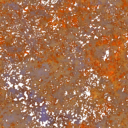
|
Used for the dark brown metal in many metallic cave units, and the top of the bucket in the room_big_kusachi garden cave unit.
| |
| 寂2
(SABI 2) |
RUST-34 | 
|
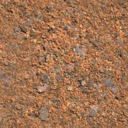
|
Used as the center room's floor in room_white14x12_metal, a cave unit in sublevel 3 of the White Flower Garden.
| |
| 寂2
(SABI 2) |
RUST-36 | 
|
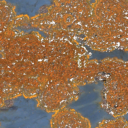
|
The blue rusted metal in nearly every metal cave unit. | |
| 寂2
(SABI 2) |
RUST-41 | 
|
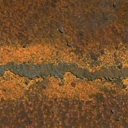
|
Used in the small path in room_white14x12_metal, and as the circular rim in the Titan Dweevil's arena, room_oootakara_tile.
| |
VisualDisk
VisualDisk is a series of stock image libraries that was distributed by dizáin. Similar in scope to Sozaijiten, there was a very large amount of volumes released and high variety in its content. However, it is used sparsely in Pikmin 2.
| List of VisualDisk textures used in Pikmin 2 | |||||
|---|---|---|---|---|---|
| Volume | Name | Source Image | Texture/Screenshot | Description | |
| M-02 Metals | M2_01 | 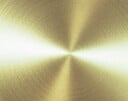
|
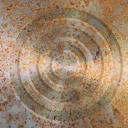
|
Used for the top of the bucket in the room_big_kusachi garden cave unit. It is mixed with "RUST-27" from Bakku no Oni SABI 2.
| |
| M-10 Leaves | M10_05 | 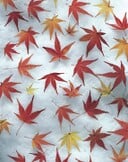
|
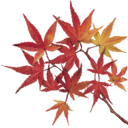
|
Used for various autumn leaves on Pikmin 2's title screen, and in the intro for the Wistful Wild when landing in the area for the first time. | |
| M-10 Leaves | M10_43 | 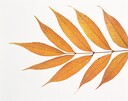
|
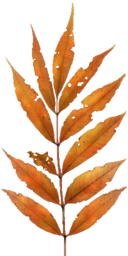
|
Used for several plants in the Wistful Wild. The leaves have been edited to look like they are decaying. | |
Fonts
Most of the fonts used in the Pikmin games are commercially-available fonts created by Dynacomware or Fontworks. Originally, they were sold bundled together with many other typefaces and distributed on CD-ROMs, but the individual fonts are still available online. Because of their availability, usage of these fonts in other media may be mistaken as a reference to the Pikmin series.
DFCraftSumi Std W9
DFCraftSumi Std is a typeface created by Dynacomware. DFCraftSumi Std W9 is used in Pikmin, Pikmin 2, and Hey! Pikmin for the bubble-like letters that appear in some menus and cutscenes. In Pikmin 3, a modified version of this font is used.
DFPOP1 Std W3
DFPOP1 Std is a typeface created by Dynacomware. DFPOP1 Std W3 is used as the main text font in Pikmin, such as for Olimar's monologs.
Seurat Pro DB
Seurat is a typeface created by Fontworks. Seurat Pro DB is used as the main text font in Pikmin 2, as seen in the ship's dialogs and other various menu elements.
Rodin NTLG Pro DB
Rodin NTLG is a typeface created by Fontworks. Rodin NTLG Pro DB is used as the main text font in Pikmin 3 and Pikmin 3 Deluxe, such as the English text displayed on the KopPad, on-screen character dialog, and other various menu elements.
New Rodin Pro DB
New Rodin is a typeface created by Fontworks. New Rodin Pro DB is used in Pikmin 3 and Pikmin 3 Deluxe for the numbers in the countdown at sunset.
Proprietary fonts
Some text that appears in the games use fonts that are uniquely created for the Pikmin series itself.
Pikmin 3 bubble-like font
An updated variant of DFCraftSumi Std W9 is used in Pikmin 3. It highly resembles the original typeface, but many minor changes have been made to improve readability, such as making the tails of certain characters longer and their widths more consistent.
Hocotate Freight text
The logo for Hocotate Freight uses a uniquely designed font. It is alien-like, but still legible English.
Koppaite text
- Main article: Koppaite text.
In Pikmin 3 and Pikmin 4, an in-universe written language appears very frequently on technology and as a background element throughout various in-game menus. The text appears as an assortment of illegible alien symbols, but these characters are actually translatable into the 26 letters in the English alphabet, which reveal some small secrets when various instances of the text are deciphered.
Audio
Similar to graphics, creating game audio often involves the sampling of various sound libraries. The games within the Pikmin series are a good example, where the vast majority of sounds can be sourced back to a number of different commercially-released products. These products are used to create the individual instrument samples and sound effects in the games, as well as long pieces of streamed music. All of the music in Pikmin, Pikmin 2, and Pikmin 3 use audio from digital instruments and synthesizers; instances of musicians performing live on real acoustic instruments are highly uncommon in the games. The new music composed by Babi for Pikmin 3 Deluxe is one of the very few occasions where this was done.[2]
Since there is a history of many different composers and sound effect programmers contributing to the audio of these games during production, there is a large variety of synthesizers and sample libraries present within them.
Kurzweil K2500R
The Kurzweil K2500 (and in extension, the Kurzweil K2500R) is a synthesizer manufactured by Kurzweil Music Systems in 1996. A lesser-known synthesizer, it is the signature synth of Hajime Wakai. The synthesizer is a staple in the audio design of the Pikmin series, being used extremely heavily for both the music and sound effects, and in all sorts of contexts.
The Kurzweil K2500R is the rackmount variant of the Kurzweil K2500, and the model that was owned and used by Hajime Wakai in his work. Typically, rackmount versions of synthesizers are functionally identical, but they lack the physical keyboard. This makes them more compact and easy to cram into a studio space; however, it is intended that they be connected to an external MIDI device, such as a musical keyboard, a computer, or some other MIDI-compatible instrument in order to use them.
K25 FARM
The purchase of a new K2500 also included several floppy disks, one of which contained the "K25 Farm". On it is a collection of several hundred new and unique presets for the K2500. Users can load these presets by simply inserting the disk into the K2500's floppy drive. If the floppy disk is lost or damaged, the files can be downloaded for free from Kurzweil's website; keep in mind, these presets are not playable without their compatible synthesizer.
The K25 FARM is used very often within the music and sound effects of the Pikmin games, even within Pikmin 3.
References
- ^ YouTube video of footage from E3, where it is stated that some of the materials used in Pikmin are from around Shigeru Miyamoto's neighborhood (at 10:10)
- ^ Babi's response to an e-mail inquiry on Reddit
